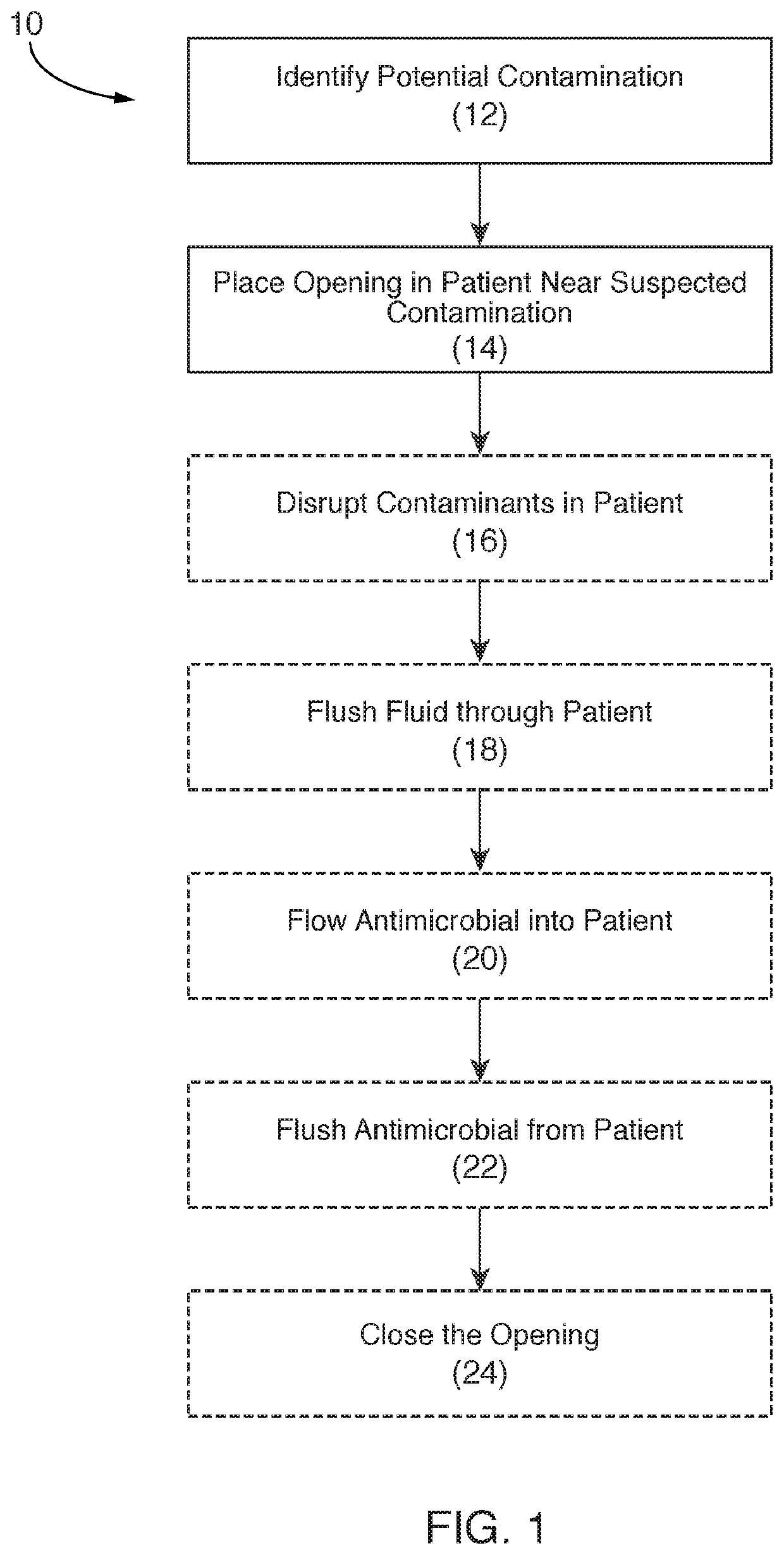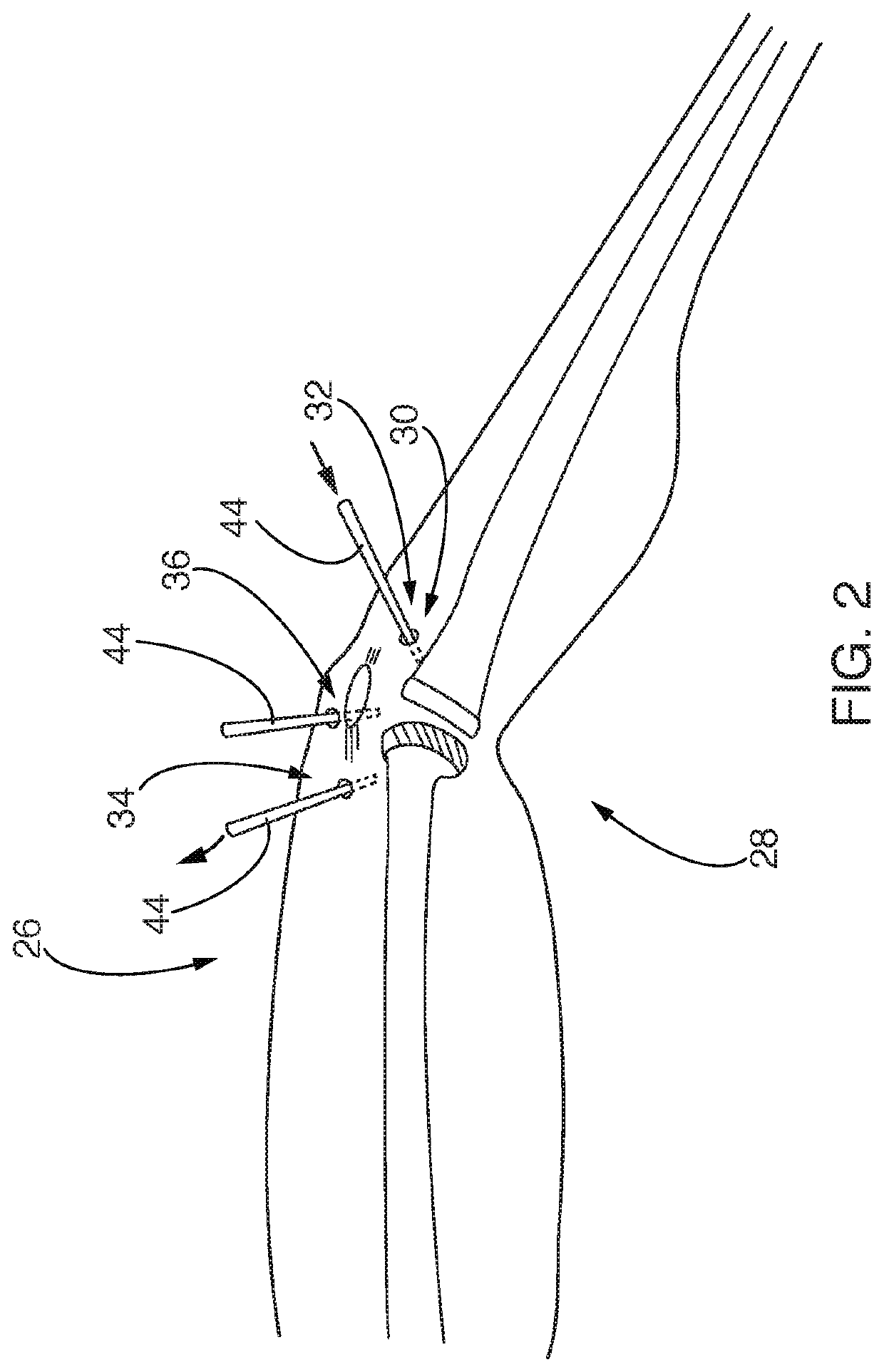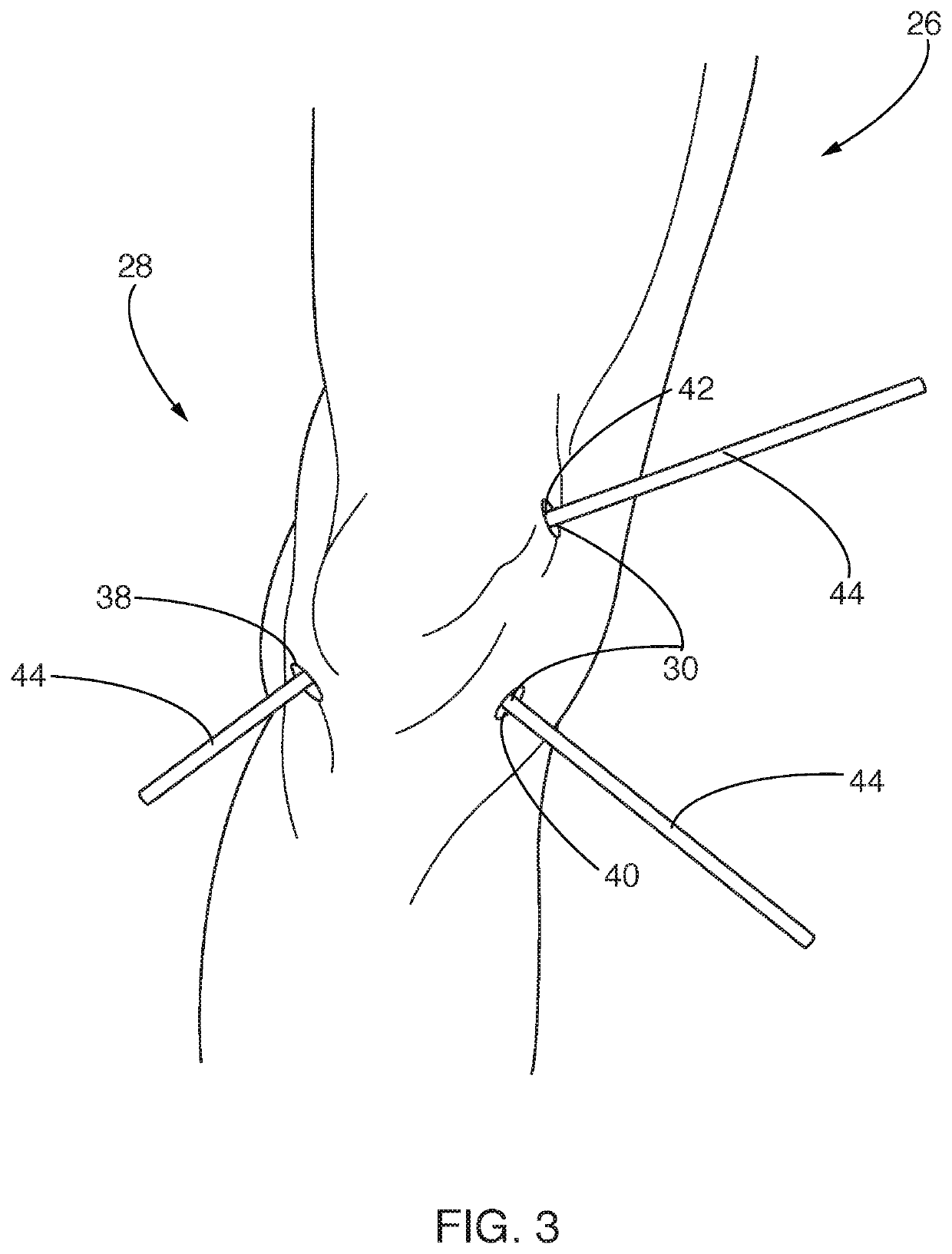Systems and methods for reducing contaminants in a portion of a patient
a technology for reducing contaminants and patients, applied in the field of systems and methods for reducing contaminants in a portion of patients, can solve the problems of contamination localization and the proportion of patients to inflate, and achieve the effect of reducing such contaminants
- Summary
- Abstract
- Description
- Claims
- Application Information
AI Technical Summary
Benefits of technology
Problems solved by technology
Method used
Image
Examples
Embodiment Construction
[0042]The present invention relates to systems and methods for reducing pathogens, infections, and / or other contaminants in a portion of a patient. More particularly, some embodiments of the described invention relate to systems and methods for reducing contaminants in a portion of a patient that has an implant and that is disposed interior to a closed surface of skin of the patient. The method can further include placing one or more relatively small openings into the closed surface of skin and injecting, pulsing, introducing, and / or otherwise flowing an antimicrobial material into that portion of the patient to contact the antimicrobial material with a surface of the implant and / or tissue adjacent to the implant. In some cases, the antimicrobial material flows into the portion of the patient faster than it flows out, such that differential pressure between inflow and outflow of the antimicrobial material causes that portion of the patient to inflate. In some cases, once inflated, t...
PUM
 Login to View More
Login to View More Abstract
Description
Claims
Application Information
 Login to View More
Login to View More - R&D
- Intellectual Property
- Life Sciences
- Materials
- Tech Scout
- Unparalleled Data Quality
- Higher Quality Content
- 60% Fewer Hallucinations
Browse by: Latest US Patents, China's latest patents, Technical Efficacy Thesaurus, Application Domain, Technology Topic, Popular Technical Reports.
© 2025 PatSnap. All rights reserved.Legal|Privacy policy|Modern Slavery Act Transparency Statement|Sitemap|About US| Contact US: help@patsnap.com



